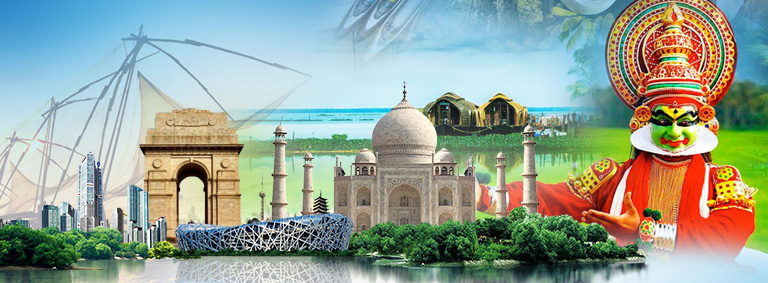Travel and tourism in India is on a high growth trajectory and is projected to grow by an estimated CAGR of 7.1% in terms of its contribution to GDP over next decade. The Indian tourism industry has bucked the global fluctuations and remained on a steady growth path for over a decade, which is evident from the fact that Foreign Tourism Arrivals (FTAs) have outperformed industry expectations and crossed the 10 million mark for the first time.
The Union Budget reflects the government’s confidence in the sector to maintain this growth momentum, and it is reasonable to expect ‘sustained sunshine’ for this sunrise sector in times to come through the overall positive measures announced by the government to boost infrastructure, connectivity and rural growth.
In order to capitalise on this huge potential, we need to ramp up infrastructure creation and human capital development to carve a niche in the highly competitive international tourism market. The Indian hospitality industry has emerged as one of the key industries driving the growth of the service sector and thereby, the Indian economy. The Indian hotel market is projected to grow to around USD 13 billion by 2020. Through a multi-modal focus on air, road and rail, significant improvements in last mile connectivity can be expected.
Niche tourism activities like community based tourism, rural tourism and ecotourism also stand well poised to benefit from budgetary appropriations on improving rural infrastructure, skill development and diversifying livelihood opportunities.
Infrastructure development is a pre-requisite to gain higher tourist numbers as well as tourism receipts, and requires the combined effort of the host community, tourists and private and public sectors. The public sector needs to set up the planning, regulation and monitoring systems that use public spending as a catalyst to attract capital investment from the private sector, which would be primarily interested in areas that enhance the competitiveness and economic appeal of the destination.
Infrastructure development is a pre-requisite to gain higher tourist numbers as well as tourism receipts. It requires the combined effort of the host community, tourists and private and public sectors.
Investment in building a robust tourism infrastructure is a sine quo non for sustained growth of the tourism sector. Travel & Tourism garnered 4.5% of the world’s total investment garnered 4.5% of the world’s total investment in 2017. Indian industry, on its part, is making sustained efforts for attracting investments in the tourism sector. FICCI has been leading from the front through a series of focussed events such as the annual Tourism Investors’ Meet. The Chamber is also partnering strongly with State Governments to promote tourism with events such as the Uttar Pradesh Travel Mart and the Orissa Travel Bazaar. Needless to add, FICCI along with the Ministry of Tourism, Government of India and Rajasthan Government has been collaborating successfully for the last 10 years in organising the Great Indian Travel Bazaar, a buyer-seller travel mart for showcasing the Indian tourism product to the rest of the world.
In this context, it would be pertinent to list some of the measures that could accelerate growth of tourism infrastructure in the country. These steps have been recommended by a recent FICCI-YES Bank Report, titled ‘Tourism Infrastructure Investments: Leveraging Partnerships for Exponential Growth’.
Tourism-Specific Ease of Doing Business (EoDB) Rankings: ‘EoDB Tourism State Rankings’ can be introduced with comprehensive parameters for assessment of State initiatives. A uniform format can be introduced for collection and publishing of tourism data and statistics across states and districts to facilitate easier decision making by investors and also measure impact of initiatives of various states and other stakeholders.
Private Sector Participation for O&M of Existing Government Infrastructure: There is a large inventory of tourism infrastructure owned by state tourism departments as well as interconnected sectors like forest bungalows, many of which boast of
exquisite locations that are lying idle or have further potential to upscale and attract more visitors, thereby also becoming self-sustainable. The private sector can be roped in to operate, improve or refurbish such properties and thus also boosting the room inventory.
Promote Smart and Frugal Infrastructure: As we expect tourism models to uplift communities, creation of modern infrastructure will be pivotal towards attracting tourists, even more so in remote and offbeat locations. Currently, the minimum project cost for tourism projects to qualify for infrastructure status is Rs. 200 crore, which is under consideration to be lowered to Rs. 50 crore. However, if this entry barrier can be further lowered, or a separate incentive scheme can be carved out for smaller projects, it will encourage private players to participate in small infra.
Promote MICE Sector: While MICE sector has experienced growth in the Indian sector in the past decade, India still has less than 0.5% share of the world meetings and conventions market. Developing more world-class exhibition centres can enable India to attract global conventions and meetings in tourism as well as other sectors.
Incentivise Private Sector Participation: The Government should incentivize private players to invest in unserved/ under-served tourism projects. The incentive pattern can be friendlier for attracting more innovative tourism projects vis-a-vis run-of-the-mill projects. For instance, interest subvention scheme can be introduced for small tourism projects like community homestays, RO-RO and boat operators. Additional incentives, like additional interest subvention post- COD, can be provided to projects (including new hotels and resorts) at tourist destinations with limited tourist facilities and connectivity.
The Union Budget reflects the government’s confidence in the sector to maintain this growth momentum, and it is reasonable to expect ‘sustained sunshine’ for this sunrise sector in times to come.
Online Repository of Land Banks: Availability of suitable land is one of the main concerns for investing in tourism projects, especially when it comes to sustainable tourism infrastructure in fragile areas. The states need to develop land bank outlining the land parcels available for tourism projects, which are made accessible over an interactive web platform with the support of Ministry of Tourism. This will enable investors to assess the preliminary viability of their projects basis the nature of land parcel/ select the appropriate land parcel suitable to the proposed project.
Medical and Wellness Tourism: Over the past few years, the government’s efforts to promote and position Yoga and traditional Indian wellness therapies has paid dividends with World Yoga Day being observed globally on June 21 each year. India holds a competitive advantage in offering these products and services, and is also one of the most competitive destinations offering specialized treatments at low costs. Need of the hour now is to attract investments to create supporting infrastructure that can help reap dividends of this global movement led by India, as well as further consolidate offerings in allopathic healthcare and advanced medical procedures.
Coastal Area Development: Blessed with almost 7,500 km of coastline, beaches/coastal tourism forms one of the top tourism themes in India and is also a preferred theme for foreign tourists visiting India. To leverage on this coastal advantage of India, priority can be accorded for identifying a minimum of 100 coastal destinations/ beaches and develop the basic tourism infrastructure in addition to ensuring cleanliness at these locations. In the Konkan coastline for instance, a community-based Konkan Inclusive Tourism Ecosystem (KITE) can be developed wherein Modern Fishing Villages can sustain their traditional livelihoods with income augmentation from tourist activity, and the same can be replicated in other key coastal areas.
Leveraging MSME funds: India’s immense cultural and natural heritage is managed and conserved by local communities and small entrepreneurs whose business models now require scale-up through capital infusion, capacity building and skill building support. Convergence of government schemes with organizations like NABARD, SIDBI among others can be channelized into developing tourism infrastructure in rural and hinterland areas.
Technology for Infrastructure Assessment and Management: Today’s technologies give us clear insights and easy to use tools to advance sustainable and inclusive growth, and go far beyond cashless transactions and reservations. Data analytics can provide insights into consumer spending and movement trends which can further facilitate municipalities on crowd management and urban planning. Enabling a cashless ecosystem for tourists, introducing value added products like Incredible India Travel Card, application of GIS and emerging technologies, like Artificial Intelligence (AI) are some of the possible areas for intervention.
————
The author is Chair of the FICCI Tourism Committee, Past President, FICCI and Chairperson of the Lalit Suri Hospitality Group.
————-





